1966 Ferrari 330GTC
Take a rookie concours entrant, an obsessively restored Ferrari, a curious Octane editor and set them loose at Salon Prive. James Elliott reveals all.
Photography Gerard Brown/Salon Prive/Scott Pattenden
HOW TO WIN PRIZES and influence judges
How to win your class at Salon Prive
This story was conceived on one of the worlds premier concours lawns and played out on another. Issue 221 of Octane came out in September 2021 and included a feature by Italian correspondent Massimo Delbo on being a judge at the Pebble Beach Concours. Almost immediately after, at the Concours of Elegance, an idle discussion between myself and Tom King of Bell Sport & Classic led to a year-long plan for Octane to feel what it is like to experience the other side of the coin, by ‘presenting’ a car at a top-tier concours — Salon Prive — the following year.

The conversation was prompted by the presence on the Bell Sport & Classic stand at Hampton Court of a near-naked Ferrari 330GTC bodyshell. All it wore was its bewitching Verdi Chiaro Metallizzato paint. That’s simply light green metallic to you and me, but say it in Italian, drink it in with your eyes and that was a concours-winning colour if ever I had seen one.
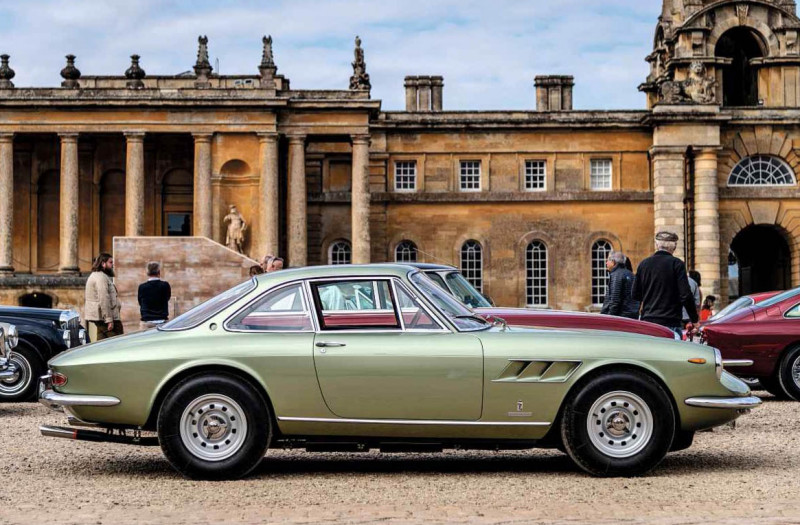
It is the original colour, too. Chassis 09069 was a first- year example of the 330GTC, a stop-gap GT for which Pininfarina’s Aldo Bravarone gorgeously melded the front of his own Superfast with the rear of the 275GTS. It was in production for just two years, shifting around 600 units, and is an exceptionally dainty and purposefully pretty (especially in profile) GT straddling the eras of when Ferrari was all curves and when the creases and edges started to take over.
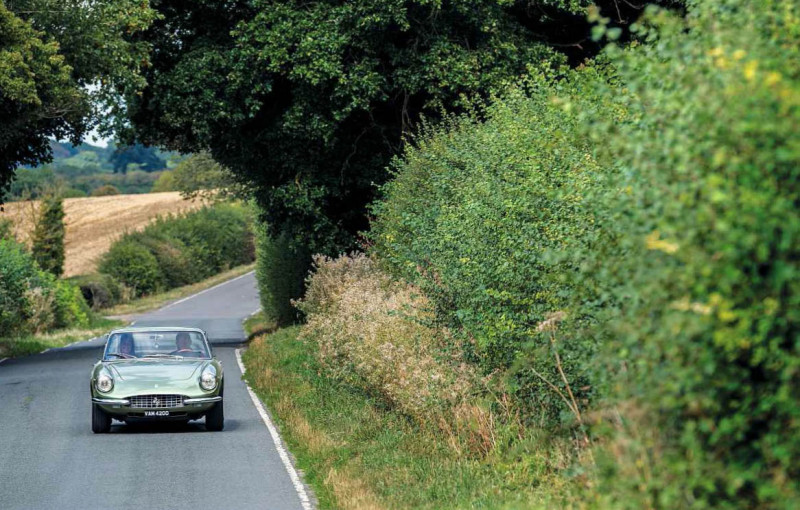
It shares a 4.0-litre, 300bhp version of Gioacchino Colombo’s 60" V12 with the more sedate 330GT 2+2 but was on the shorter, sportier 2400mm 275GTB wheelbase and was significantly more luxuriously appointed, with electric windows, lavish noise deadening and the ability to waft two people and their luggage at express speeds in drawing-room comfort. All round, this Pininfarina beauty was by far Ferrari’s most accomplished mile-munching GT to date.
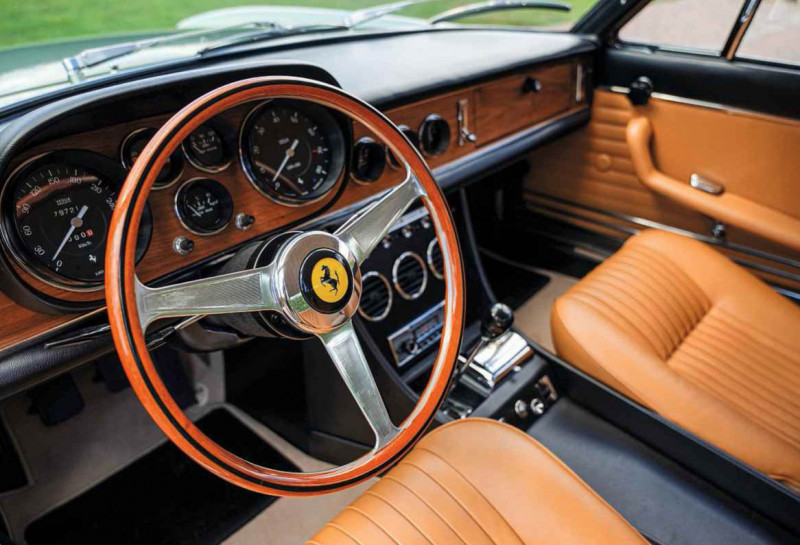
This example was first sold to Alfred Pinkas in October 1966 by racer and dealer Baron Emmanuel ‘Toulo’ de Grafienried’s Ferrari emporium in Lausanne. It subsequently moved to Venezuela, where it was initially used by Banco Construction bigwig Jose di Mase and, after di Mase fled the country following a banking crisis, his chosen custodian Alvin Rafael Acevedo. A bitter battle between the two resulted in 09069 — then Azzurro Metallizzato (metallic blue) and in ‘well-worn’ condition — being exported to Denisse Rodriguez in New York in 2015 before it was bought for restoration by Bell Sport & Classic, where it waited patiently in the queue behind the company’s 330LMB recreation. When work on that finished in early 2021, the team set to on the 330.
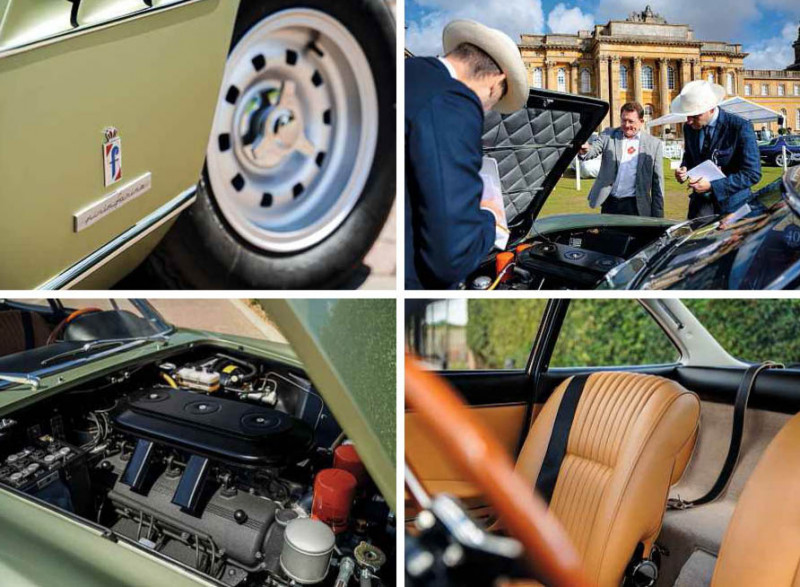
The Bell team had actually stripped the 330GTC as soon as it arrived six years ago and did most of the metalwork at that time. The shell was highly original and in remarkably good condition, requiring just sills and doorskins plus repairs to some damage to one of the rear quarters and another ding on the nose that had been lead-filled and needed repairing properly.
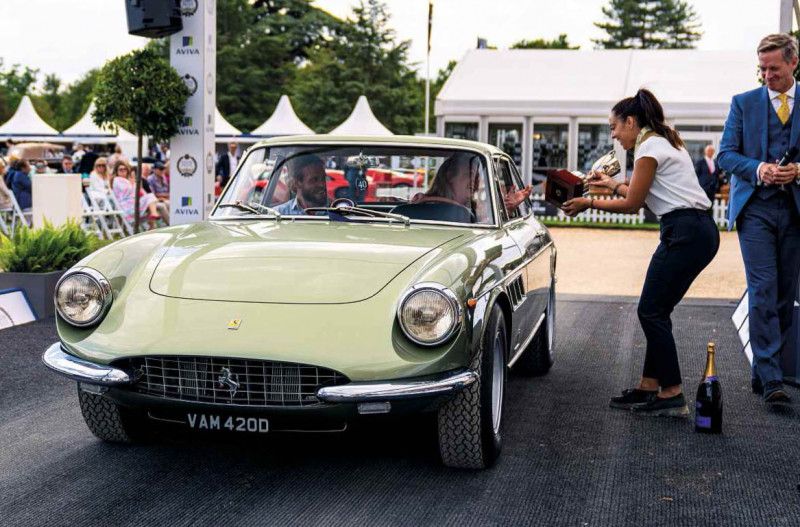
Just as with the LMB, the project was led by Elliot East, who lived and breathed it as Octane followed all the highs and lows of the restoration over the following year. Like me, Bell Sport & Classic was a concours first-timer so it was a journey into the unknown for both of us. Regular visits ensured I was as clued-up on the restoration as any real owner would be. What we hadn’t banked on, however, was someone buying the car in the midst of this process. Enter Christy Chiltern-Hunt, Hertfordshire-based lettings agent for Knight Frank in London, former owner of a Ferrari 365GTC/4 and now the owner of the ‘Octane 330GTC.
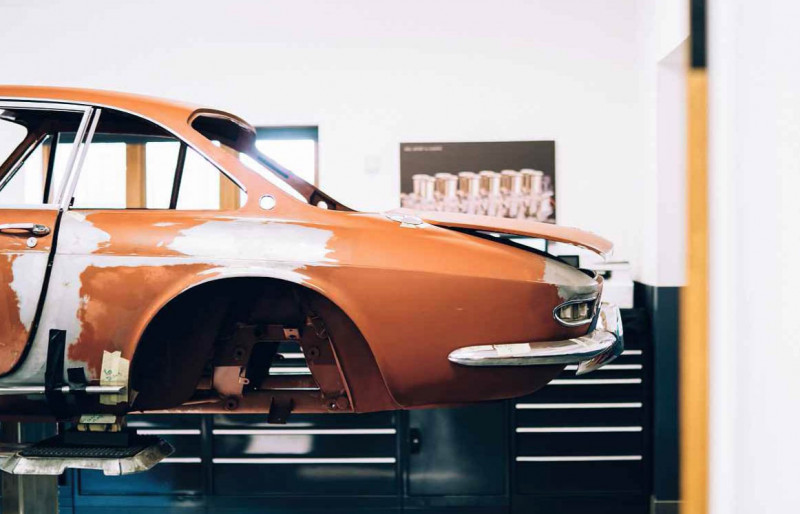
It would have been the end of our story had Christy not wanted to go ahead with the concours, but luckily she bought into our plan wholesale. She also shouldered a third of the stress, which was helpful because it mounted dramatically as Salon Prive approached.
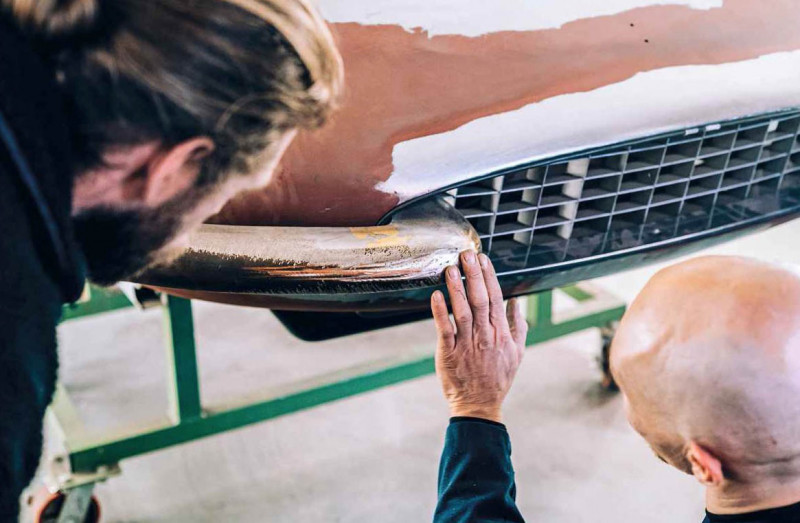
Elliot explains: ‘We were doing really well, it was ready to drive two months before the event… and then it all went wrong. Being an early 330GTC it has the Dunlop C4 brake servo, which we had refurbished when we got the car. When we put it back on, it failed on the first test drive. We couldn’t find another or the parts so it ended up going to Italy to be refurbished again. That lost us seven weeks and, when it finally came back, it lasted only two days.’

With a week to go until Salon Prive, there was a desperate rush and a mad panic. ‘Luckily we found out that the same servo is used on early Jensen Interceptors [though the pushrod length is different], so we found a Jensen specialist who could do it for us using our donor spare.’
I made a final pre-event visit a few days before Salon Prive. The transaxle was still to be assembled and put back in (meaning the seat was out, too), but other than that it was pretty much done. There were a few jubilee clips yet to be replaced with correct stainless straps, but otherwise all the hoses sprouting from and surrounding the glorious rebuilt engine were spot-on, as was every security tag and sticker, the battery and most else. There was a new loom; wire colour and thickness are a big deal, as are the terminals, all 250 of which had to be chopped off and replaced with the period- correct black items.

This level of precision should have come as no surprise, of course, the car having been meticulously prepped according to the judges’ concours guidelines book for the model — ‘It has become my bible,’ says Elliot; ‘for me the car has to be absolutely perfect. I want to build a brand new old car’ — and also having received the thumbs-up from a leading Ferrari authority in a pre-event inspection.
The interior was originally black vinyl (vinyl was always black, only leather had colour) and is now black and tan leather, which was an option, though the armrests should be black vinyl according to the ‘bible’. Would the judges notice? The judges certainly won’t spot that the recon Becker Europa has modern internals and an aerial tucked away in the headlining. The big XWXs on optional 14in cast rims rather than the 15in Borrani wires are also just right, and look far better suited to the car to my mind.
I had wrongly assumed that Christy, coming from a well- known Ferrari-owning (and -showing) family, would be an expert at this concours lark and would be able to hold my hand through the process. Not a bit of it: this whole adventure was virgin territory not only for me and Bell Sport & Classic, but Christy, too. Furthermore, she had driven the car only once (briefly) a week earlier and I had never driven it, so we are feeling pretty nervous when we eventually gather at Blenheim Palace, early the day before the concours opens, for the owners’ tour. This weaving drive around the glorious Cotswolds — with a spectacular lunch stop at Compton Vemey — would be a chance for us both really to get to know this spectacular as-new car.
The lusty 3967cc engine has been run on the dyno, so we have no qualms about its durability and relish its freshly built tautness as it gobbles through a trio of Weber 40DFIs and pumps out an impressive 288lb ft of torque at 5000rpm. The clutch is typically heavy (they all are on 330s) and the five-speed transaxle — linked to the engine via a torque tube; dog-leg first — is as truculent when cold as legend suggests.
As we launch ourselves into Oxfordshire’s country lanes we are unlikely to experience either its 152mph top speed or 6.5sec 0-60mph sprint time. It soon becomes clear that the weighty, unassisted worm-and-roller steering and narrow lock are not well-suited to these tight villages and single- track roads, though its slender shape (1626mm across) is perfect for slotting through tight spaces without ever seeming to impose on the airiness of the cabin.
Periodically, we would spot Elliot in his support van leaning out as if listening intently for botched gearchanges. In fact, while driving, I feel more judged and intimidated by Elliot travelling behind in a separate vehicle than by the car’s owner Christy in the seat next to me.
Eventually, when not that far from home, we abandon the routebook and follow the A44. It’s like extracting the Ferrari from an alien environment and taking it home, the fast undulating and sweeping A-road being precisely the terrain this car was designed to thrive on. Here it is in its element, all sense of physical input evaporating as it flows from comer to corner with liquid smoothness, gathering pace rapidly, gearlever snicking effortlessly through the open gate and alldisc brakes being utilised to the full. Wishbones all round, with anti-roll bars front and rear, keep it married to the tarmac with impressive neutrality plus lovely balance and weight transfer through a rigid body and ladder/perimeter chassis combo. It is on roads such as this that you realise quite how successfully the 330GTC’s design achieved its aims and quite how unfairly it is overlooked today.
After the tour we bump into Ferrari authority Ken Gross in the valeting area and find out that he is to be one of our judges. Salon Prive uses a band of intimidating independent experts from ICJAG (International Chief Judges Advisory Group), bringing unparalleled knowledge and experience to the concours field — nerves set in immediately. Meanwhile Elliot has sprinted home with a nagging feeling that some element of the car could still be improved upon; he stays up late creating a pair of bright orange oil filters with ‘better’ stickers than the to-my-eyes identical bright orange oil filters on the car. I dip into the owners’ swish pre-event cocktail party but go home early for a revision session on the history of the car, its restoration and the 330GTC generally, so I won’t embarrass myself in front of the judges in the morning.
When I arrive on the near-deserted concours field at 8am as instructed (I would learn that concours time and real time are very different) only Elliot is already there, fitting the oil filters (he was right, they were better) and adjusting the air vents in the cabin so they’re more appealingly symmetrical.
The judges arrive at 9.40am — Gross, along with Harvey Stanley and Gabrielle Lalli. They pore over every millimetre of the car as Christy and I tell them about it. I major on those electrical terminals, thinking that such info would display the right levels of nerdy obsession to convince them that everything else must be similarly correct. They are friendly but it is pretty nerve-racking, having to minutely assess every curl of the lip and furrow of the brow for clues. After the judging we agree to go and enjoy the show and reassemble at 2pm, by when the presence of a rosette on the screen before the parades would indicate whether you had won anything.
Sadly, when we get back there isn’t one. We all feel a little deflated but, given the opposition we are up against, it’s understandable. As we stand around, feeling a little sorry for ourselves, someone ghosts in and slips a rosette under the windscreen wiper, which can mean only that we are first in class or highly commended (second). We try not to get our hopes up, not least because a rosette also adorns an immaculate two-cam shortnose 275GTB beside us.
It is only right that Elliot should accompany Christy on the parade drive, and I genuinely feel a part of the ‘team’ when Max Girardo and Andrew Bagley proclaim 09069 the class winner. Christy is on Cloud Nine, as are the Bell Sport & Classic boys, and me — a bunch of first-timers have nicked the Ferrari 75th Anniversary Celebration Class 2 crown.
That, of course, is not the end of it. On Wednesday night there is a glittering dinner for the entrants, on the Thursday there are more awards and, a new highlight, a sensational parade through the welcoming village of Woodstock in the evening, and on Friday there’s another day on the field, including the Best of Show announcement. The 330GTC is eligible thanks to winning its class, but that had already surpassed expectations so it comes as no surprise when the award goes to David Sydorick’s truly magnificent, multiple concours-winning 1956 250GT Zagato.
And with that it is all over. Make no mistake, being a concours entrant is a serious commitment, not only financially but also in terms of your time — and emotionally. It is exhilarating and exhausting, you are looked after like kings — there is even a ‘concierge’, in this case Nick Wilks, who will answer every question, cater for every whim, accommodate every foible — but in return you must shelve all sense of normality and independence for up to a week. It is great fun and immensely rewarding, but also very hard work.
With most owners billeted in the same hotel (The Bear in Woodstock, in this case), it’s also a wonderful way to meet new people and form a lasting bond with them. It is very easy to see why owners and restorers become obsessed with concours and, while many people are happy just to enjoy the show, you really have to be as hypercritical as Elliot if you want to stand any chance of taking home any silverware.
Would I do it again? Well, cracking open the Champagne on those manicured lawns in the shadow of Blenheim Palace and riding on a wave of euphoria from the class win, Christy, Bell and I all reckon we should celebrate with a road trip to Italy next year. Lake Como in October, perhaps...
Below Champagne and a trophy: it's a class win for the ‘Octane’ Ferrari — seen here driven by owner Christy Chiltern-Hunt and restorer Elliot East.
Above While editor James Elliott looks on (grey jacket), judges Ken Gross, Harvey Stanley and Gabrielle Lalli inspect the work of Bell Sport & Classic, which went right down to the wire.
TECHNICAL DATA 1966 Ferrari 330GTC
- Engine 3967cc V12, OHC per bank, three Weber 40DFI carburettors
- Max Power 300bhp @ 7000rpm
- Max Torque 288lb ft @ 5000rpm
- Transmission Five-speed manual transaxle, rear-wheel drive
- Steering Worm and roller
- Suspension Front and rear: double wishbones, coil springs, telescopic dampers, anti-roll bar Brakes Discs
- Weight 1300kg
- Top speed 152mph
- 0-60mph 6.5sec
Above
Concours preparation goes beyond the restoration process: a new level of detail thought is required so that every aspect can be meticulously composed for judgement.
Above
The Ferrari as discovered, before it was restored to its original colour of Verdi Chiaro Metallizzato; interior was weathered but all salvageable, though black vinyl was replaced with (optional) black and tan hide


